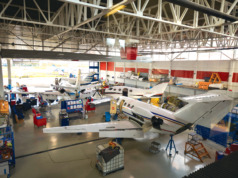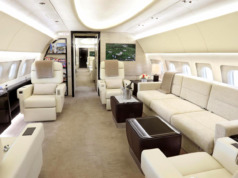Maintenance service programs can play an important role in managing your business jet or turboprop operations, by helping to:
- Simplify your operational budget planning,
- Provide insulation against extraordinary unscheduled maintenance event costs,
- Help ensure quicker and more efficient response times, and
- Integrate all elements of your aircraft’s maintenance, creating just one point of contact.
A full range of programs is available for engines, auxiliary power units, airframe, avionics, and more, from both Original Equipment Manufacturers (OEMs) and third-party providers. Each program is unique and offers varying levels of coverage, which can include or exclude items like shipping, labor, foreign object damage, paint, interior, tiered pricing, program transfer/exit costs, and more. When comparing programs, be sure that you or your aviation manager understands all the coverages and contractual terms.
As you evaluate maintenance programs, also consider your company culture, and how it aligns with these strategic initiatives:
Smoother Cash Flows — Does your company and its budgeting process value smoother cash flows? Or can you live with the variability of annual maintenance costs: both scheduled costs and spikes in expenses to accomplish unscheduled repairs? Maintenance programs can help you to stabilize your budget.
Risk Appetite — With a maintenance program, you essentially are shifting the unscheduled maintenance risk to the program provider. Consider the maintenance program like an insurance policy: does your company prefer to self-insure and live with that risk? Or does third-party insurance have value? On larger risk items, such as engine overhauls which, with unanticipated repairs, can be as much as $2 million each, shifting that risk to the program provider may offer significant value.
Cost of Money — As you pay into a maintenance program, you are depositing funds with the program provider to pay for all future maintenance events. There is a cost associated with having those funds be in someone else’s bank, and not working for you. The alternative is to self-allocate the funds, keeping them working within your company. However, this takes internal discipline and oversight, as well as the willingness and ability to cover any extraordinary unscheduled events
Financing Structure — Your company’s financing structure will dictate some of your choices with respect to maintenance programs. Specifically, financing leases require that the aircraft be on an engine maintenance program. Because the engines are key to the value of the aircraft, lessors must have a reasonable way to estimate the value of the aircraft lease termination.
Residual Value and Resale — Maintenance programs have a direct, bottom-line impact on residual values. Thus, a major maintenance event due soon on an aircraft you are selling would have no impact on the aircraft’s value, as that cost already is covered by the program. Since most maintenance programs are transferable, they are a factor when you sell your aircraft. An aircraft on a maintenance program carries a much lower risk for unscheduled or scheduled maintenance costs for the prospective buyer, who then would assume the hourly cost of the maintenance program after purchase.
Before you consider your next maintenance program:
- Meet with your finance and treasury departments to examine your company’s sensitivity to smoother cash flows.
- Explore costs of capital and return on investment rates to determine the total program value and costs.
- Solicit input from your risk management group as you consider risk tolerance and risk mitigation.
- Contact operators of aircraft similar to yours in type and size. Ask about both the benefits they receive as well as any frustrations with their maintenance programs.
Taking these steps can help you determine your best and most effective maintenance strategy. BAA
Jeff Agur, CEO of VanAllen, handles fleet planning and aircraft acquisition projects. This year, he supported the detailed planning and acquisition of more than half a billion dollars in jets, turboprops, helicopters, and fractional shares.




